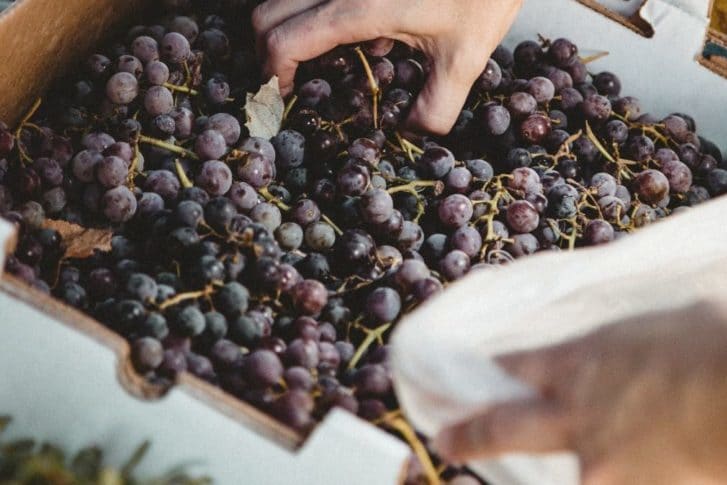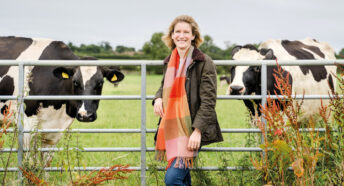How to find the best local food near you
The revival in interest in local food has been a fantastic boost to rural communities as well as for our stomachs.
Whether it’s fresh, crunchy carrots just pulled from the soil by the same person selling it to you, or a loaf of bread made from local grain, it’s the tastiest way to help the environment and support your local area.
But it’s not always easy to know where to find local food in your area. So here are our top tips for getting the best local food near you.
1. Check on ‘Big Barn’ for places selling local food near you
The best website we’ve found for discovering local food in your area is Big Barn. You can search by postcode or place name, and the site has a map of a wide range of local food outlets: farm shops, farmers markets, delicatessens, independent shops, and community-supported farms.
2. Sign up to your local community farm
Community-supported agriculture (CSA) has grown massively over the past few years, with new farms springing up all over the country. Each farm recruits members who pay a subscription and commit to taking produce for a fixed period, often a year. This gives the farm a secure stable income and makes sure the farmer gets a fair price – and you get a regular supply of local freshly picked fruit, veg and other produce (such as meat or honey).
It’s also a great way to learn about farming and horticulture: there’s often a strong community element with members encouraged to volunteer and help out with the farm. If you want to eat really fresh, sustainable local food while being closely connected to its production, CSA is for you. You can find if there’s a CSA in your area at the CSA Network site.

3. Find a Pick Your Own farm
Pick your own is a great way to get local fruit that’s fresh as it can be. It’s also a fun day out for the family – kids love picking their own strawberries (and maybe eating a few along the way). They also get to learn where the fruit comes from.
Big Barn has some links to pick your own farms but also try Pick Your Own Farms, which has a decent listing by county.
4. Try traditional markets
It’s well worth checking out your local traditional markets – street markets and covered markets. You might be surprised how much local food you find. We researched traditional market stalls in three towns and found many sold local food and some in large amounts.
In many ways, market stalls are not much different from traditional specialists like butchers, bakers, greengrocers and fishmongers, and with similar produce. Labelling may be an issue so be prepared to ask what’s local and in season.
There are over 1,000 markets in the country with opening times varying from one day weekly to most of the week. If you haven’t been for some time, do go and explore and let the stallholders know you’re interested in local food.
5. Sign up to a box scheme
Box schemes are great for providing fresh, seasonal produce, especially fruit and vegetables, and for supporting smaller producers. Schemes we interviewed in our food webs research were usually supplying very high percentages of local food. They can be a convenient alternative if getting to the shops is difficult and often they can supply meat, dairy, eggs and drinks, as well as the traditional fruit and veg.
With veg boxes, it can take some experience to make good use of the range of seasonal veg delivered. If you’re not a confident cook, think about starting with a less frequent delivery to get used to it. You may soon find that you’re eating and enjoying much more veg and varieties than before.
The Soil Association have a helpful map with postcode/place name search for your most local organic box scheme.
6. Visit independent food shops
Specialist food shops – butchers, bakers, greengrocers and fishmongers – can be excellent places to find local food. We interviewed many local food shop owners as part of our local food webs research and found that, on average, these traditional shops stocked around 40% to 70% of local food, with butchers scoring highest.
Again, try the Big Barn website for some leads but it’s worth visiting your local butcher or greengrocer or deli and asking what’s local.
7. Visit a farm shop
There are around 4,000 farm shops across the UK, meaning if you live in a town or village there should be one within a few miles of where you live. Farm shops usually have to sell a high percentage of their own produce, though many also buy in from elsewhere to extend their range or season. Some of these goods may come from further afield, including abroad, but much is likely to be local: farm shops we interviewed stocked on average around 70% local food – sourced from within 30 miles.
There isn’t a one-stop site dedicated to farm shops but you should be able to find local farm shops through Big Barn or using a search engine.
8. Find a farmers market near you
From the very first official farmers market in Bath in 1997, there are now hundreds across the country. Farmers’ markets come in all sizes but most have the rule that stall owners must sell their own produce, so they are a very good source for local food, even in the heart of the city.
As they are normally in town centres, they’re often accessible if you don’t use a car, but frequencies tend to vary from monthly, fortnightly to weekly. They’re great for fresh fruit and veg, meats and often preserves – jams, pickles and honey – and bread and cakes. Distinctive local products make them fun to explore and for finding treats. Take along some cash in case they don’t have card facilities.
Local Farmers Markets is a good dedicated site listing around 450 farmers markets across the UK with contacts, dates they run and the number of stalls selling food from the local area.

9. Your local supermarket
Finally, it’s still worth checking out your local supermarket to see what local food you can find. Booths, the East of England Co-op, Budgens and Waitrose have a better track record on local or regional food than most. The big four supermarkets (Tesco, Asda, Sainsbury’s and Morrison’s) have a mixed and patchy record on local food.
Our research found local food generally makes up around 5% or less of stock, and there is a long-standing debate about how well the big chains support smaller local suppliers or pay a fair rate.
Whichever supermarket you shop in, it’s worth looking out for local or regional labels and, if you can talk to managers or section managers, show your interest in local food. It can only help if you do to encourage them to stock more and label it better.








